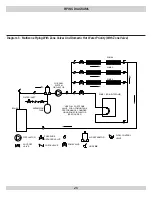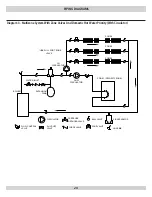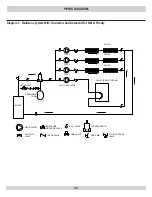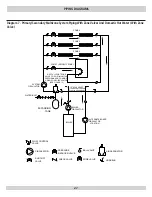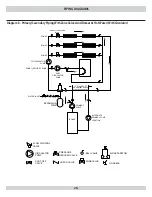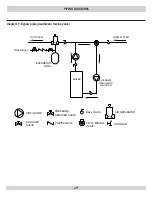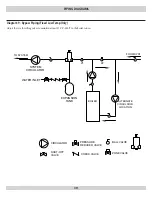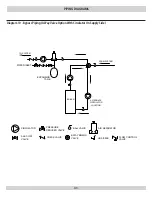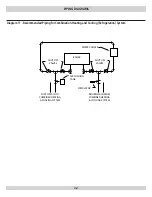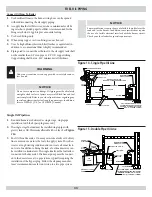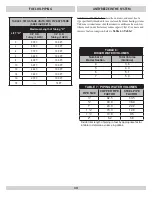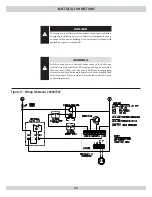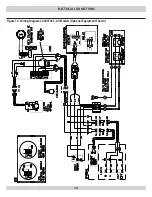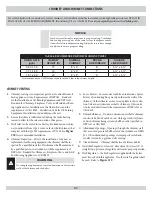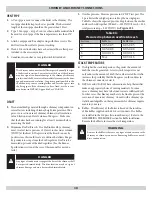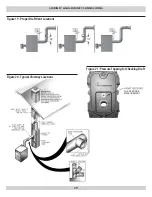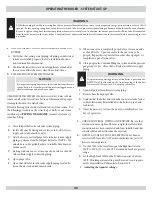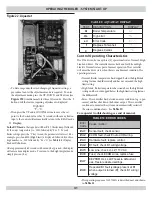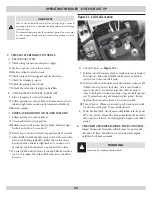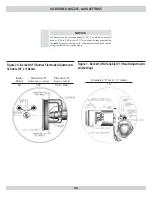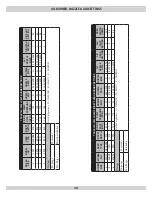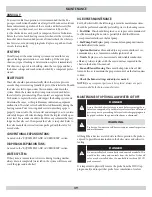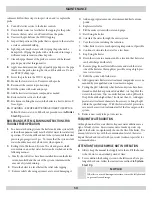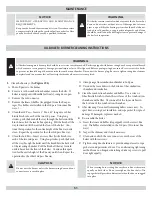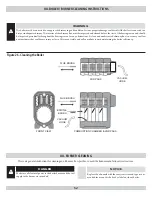
NOTICE
Fresh air (ventilation) is important to proper venting. Ventilation
and venting are two parts of the same system. Inadequate ventila-
tion will result in inadequate venting. Always be sure to have enough
ventilation to ensure proper venting.
37
TABLE 8: RECOMMENDED MINIMUM CHIMNEY SIZES
FiRiNG RatE
(gph)
cHimNEy
HEiGHt (ft)
NOmiNaL
cHimNEy
ROUND
LiNER iNSiDE
SQUaRE
LiNER iNSiDE
0.60 -1.30
15
8” x 8”
6”
6 ¾” x 6 ¾”
1.31 -1.80
15
8” x 8”
7”
6 ¾” x 6 ¾”
1.81 -2.00
20
8” x 8”
8”
6 ¾” x 6 ¾”
For elevations above 2,000 feet above sea level, add 3 feet to the chimney heights.
CHiMNeY AND CHiMNeY CONNeCTiONS
For oil fired boilers with connections to vents or chimneys, vent installations shall be in accordance with applicable provisions of NFPA31 IN-
STALLATION OF OIL BURNING EQUIPMENT, latest revision, (U.S.) or CSA B139 (Canada) and applicable provisions of local building codes.
CHiMNeY VeNTiNg
Chimney venting is an important part of a safe and efficient oil
1.
fired appliance system. Requirements of NFPA31 – Standard
for the Installation of Oil-Burning Equipment and NFPA 211 –
Standard for Chimneys, Fireplaces, Vents, and Solid Fuel-Burn-
ing Appliances for installations in the United States and the
requirements of CSA B139 – Installation Code for Oil-burning
Equipment. (Installations in Canada) must be met.
Ensure that there is sufficient draft during the entire heating
2.
season to allow for the safe evacuation of flue gasses.
The boiler can be vented into a fireclay tile-lined masonry chim-
3.
ney constructed from type L vent or a factory built chimney that
complies with the type HT requirements of UL103. See
Figure
#20
for recommended installation.
Chimney Inspection – Prior to the installation of any new or
4.
replacement fuel burning equipment the chimney shall be in-
spected by a qualified installer. The chimney shall be examined
by a qualified person in accordance with the requirements of
NFPA 211, Standard for Chimneys, Fireplaces, Vents, and Solid
Fuel Burning Appliances or CSA B139.
!
WARNING
De-rating the appliance may cause condensation on the interior
walls of the chimney and the boiler.
Loose Mortar – Loose mortar could be an indication of prior
A.
history of condensing flue gases upon the inside walls of the
chimney. Colder climates are more susceptible to this condi-
tion. Under no circumstances shall a chimney of this condi-
tion be used until it meets the requirements of NFPA 211 or
CSA B139.
Unlined Chimney – Under no circumstances shall a chimney
B.
constructed of brick only be used. Only approved clay liners
or listed chimney lining systems shall be used as specified in
NFPA 31 or CSA B139
Abandoned Openings – Openings through the chimney wall
C.
that are no longer used shall be sealed in accordance to NFPA
211. Often abandoned openings are improperly sealed and
usually covered by a gypsum wall covering.
Clean Chimney – Chimney shall be free of all loose debris.
D.
Install draft regulator at least 18” above breach. At least 18” of
5.
straight run up stream of regulator will ensure proper operation.
Draft Regulator – the draft regulator supplied with the boiler
6.
must be used with this appliance. No other draft regulator shall
be used. Refer to
Figure #19
.

